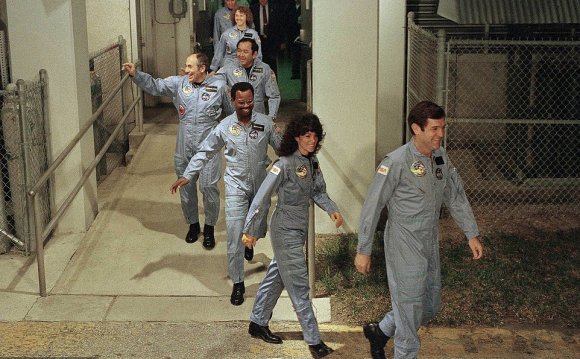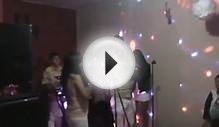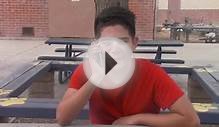
The Challenger shuttle crew, of seven astronauts-including the specialties of pilot, aerospace engineers, and scientists- died tragically in the explosion of their spacecraft during the launch of STS-51-L from the Kennedy Space Center about 11:40 a.m., EST, on January 28, 1986. The explosion occurred 73 seconds into the flight as a result of a leak in one of two Solid Rocket Boosters that ignited the main liquid fuel tank. The crewmembers of the Challenger represented a cross-section of the American population in terms of race, gender, geography, background, and religion. The explosion became one of the most significant events of the 1980s, as billions around the world saw the accident on television and empathized with any one of the several crewmembers killed.
The spacecraft commander was Francis R. (Dick) Scobee, the son of Mr. and Mrs. Francis W. Scobee. He was born on May 19, 1939, in Cle Elum, Washington, and graduated from the public high school in Auburn, Washington, in 1957. He then enlisted in the U.S. Air Force, training as a reciprocating engine mechanic but longing to fly. He took night courses and in 1965 completed a B.S. degree in Aerospace Engineering from the University of Arizona. This made it possible for Scobee to receive an officer's commission and enter the Air Force pilot training program. He received his pilot's wings in 1966 and began a series of flying assignments with the Air Force, including a combat tour in Vietnam. Scobee also married June Kent of San Antonio, Texas, and they had two children, Kathie R. and Richard W., in the early 1960s. He attended the USAF Aerospace Research Pilot School at Edwards Air Force Base, California, in 1972 and thereafter was involved in several test programs. As an Air Force test pilot Scobee flew more than 45 types of aircraft, logging more than 6, 500 hours of flight time.
In 1978 Scobee entered NASA's astronaut corps and was the pilot of STS-41-C, the fifth orbital flight of the Challenger spacecraft, launching from Kennedy Space Center, Florida, on April 6, 1984. During this seven-day mission the crew successfully retrieved and repaired the ailing Solar Maximum Satellite and returned it to orbit. This was an enormously important mission, because it demonstrated the capability that NASA had long said existed with the Space Shuttle to repair satellites in orbit.
The pilot for the fatal 1986 Challenger mission was Michael J. Smith, born on April 30, 1945 in Beaufort, North Carolina. At the time of the Challenger accident a commander in the U.S. Navy, Smith had been educated at the U.S. Naval Academy, class of 1967, and received an M.S. in Aeronautical Engineering from the Naval Postgraduate School in 1968. From there he underwent aviator training at Kingsville, Texas, and received his wings in May 1969. After a tour as an instructor at the Navy's Advanced Jet Training Command between 1969 and 1971, Smith flew A- 6 "Intruders" from the USS Kitty Hawk in Southeast Asia. Later he worked as a test pilot for the Navy, flying 28 different types of aircraft and logging more than 4, 300 hours of flying time. Smith was selected as a NASA astronaut in May 1980, and a year later, after completing further training, he received an assignment as a Space Shuttle pilot, the position he occupied aboard Challenger. This mission was his first space flight.
RELATED VIDEO












